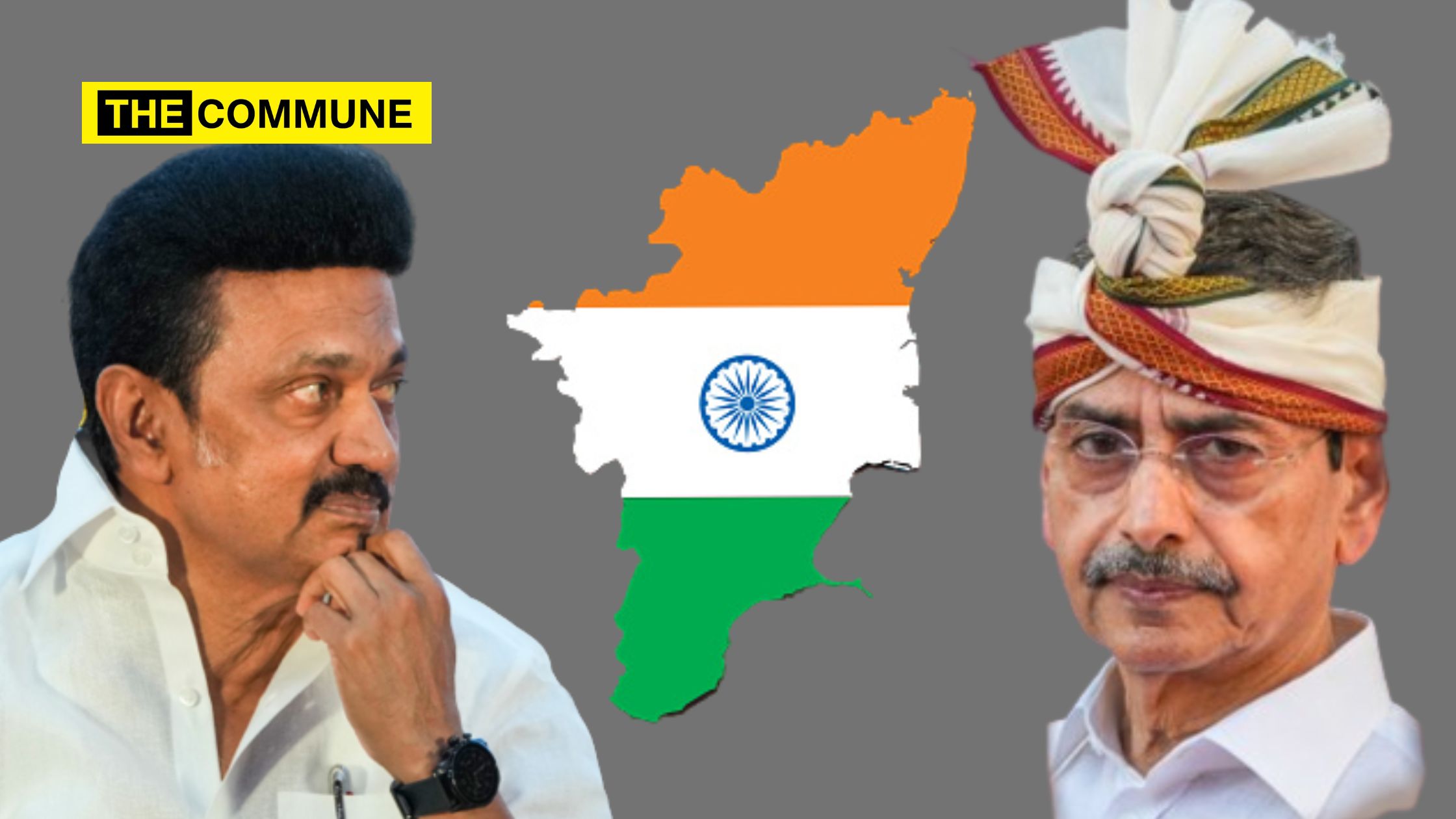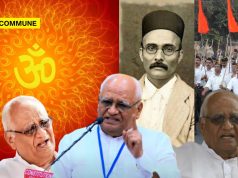
Recently, Tamil Nadu Governor RN Ravi drew fresh controversy over the reference to Tamizhagam in the invitation card issued on his behalf for Pongal celebrations a day after he skipped key portions of the speech at the inauguration of the Assembly session. He later walked out of the Assembly when Chief Minister MK Stalin moved a resolution against the deviation from government’s draft for the address. Ravi has been described as Tamizhagam governor in the invitation, which carries the national emblem this year in place of that of Tamil Nadu. He last week suggested Tamil Nadu should be renamed Tamizhagam and triggering a sharp response from the ruling Dravida Munnetra Kazhagam (DMK). The Bharatiya Janata Party (BJP) justified the suggestion, saying the landmass of the state has been referred to as both Tamizhagam and Tamil Nadu in Tamil literature. This has reignited the debate on ‘Aryan-Dravidian’ divide particularly on political lines stirring dangerous regional tendencies. In this context, this article will analyse the recently emerged ‘Tamil-Tamizhagam’ debate and understand why it is high time that we look past the concept of ‘Aryan vs Dravidian debate in interest of the nation?
‘Tamil Vs Tamizhagam’ Debate
Tamil Nadu originally means Tamil ‘land’, now also read as ‘Tamil country’. ‘Tamizhagam’, on the other hand, means the ‘abode’ or ‘land’ of the Tamil people and was the name of the ancient Tamil country.
RN Ravi while speaking on the topic said that, “Here in Tamil Nadu, a different kind of narrative has been created. Everything applicable for the whole of the country, Tamil Nadu will say no. It has become a habit. So many theses have been written – all false and poor fiction. This must be broken. Truth must prevail,” …. “Thamizhagam would be a more appropriate word to call it,”. Further he stated that the word ‘Nadu’ in the Tamil language means ‘land’, but has come to mean ‘country’ at times, viewed through the lens of Tamil nationalism. Ravi seems to have suggested the word ‘Thamizhagam’ instead to distance from the interpretation of the term ‘Tamil Nadu’ as more of an autonomous region, than one that is part of India. According to a press release by Raj Bhavan, he also said, “There has been regressive politics with the wrong habit of refusing everything that benefits all sections of people including academicians blindly for their own interests, claiming that the state is not integrally part of India,” the release said. Speaking on the politics over the issue the Governor reportedly said that for over 50 years, efforts had been made to reinforce the narrative that Tamil Nadu is not an integral part of India. “Tamil Nadu is soul, an idea and an identity of Nation and we should keep it alive to erase some falsehood and fiction of negative approach prevailing in the state,” he said.
The Knee-Jerk Reaction Of DMK
Soon after Ravi’s speech, there were strong reactions from several political leaders and celebrities. Members and supporters of Dravidian parties registered their protest by trending #TamilNadu on Twitter. Pushing back on the Governor’s remarks, the DMK mouthpiece Murasoli wrote, “He says the name Tamil Nadu indicates a sovereign nation. Does the name Rajasthan sound like Pakistan, Afghanistan, Uzbekistan, or Turkmenistan to you? Isn’t Maharashtra a secessionist name for its name indicates the land of Marathas? Kerala’s tourism slogan, ‘God’s own country’, may also be a demand for a nation-state status. Isn’t it problematic for you to find a ‘Desam (land)’ in Telugu Desam Party?”Writing that “India is a British creation”, the DMK mouthpiece asked Ravi to thank the British for creating India, instead of feeling proud of an imaginary “Akhand Bharat”.
The sharp reaction to seemingly unharmful remarks by the Governor is surprising but it also reveals the insecurities shrouding the Dravidian parties. The Governor’s intention is clear behind the statement. Governor is opposing politics shrouded in regionalism which pits one state, in this case, Tamil Nadu against rest of India on basis of political brownie points. It is a fact that ‘Dravidian politics’ is used as a tool for political consolidation by so called Dravidian parties shrouding it in regionalism. The overwhelming reaction by regional parties in the state is due to realisation of the fact that this reality is slowly being realised by people of Tamil Nadu.
‘Aryan Vs Dravidan’: A Colonial Construct To Divide People
The ‘Aryan vs Dravidian’ debate assumes significance as it has been the launching pad for divisive ‘Dravidian’ politics being practiced in Tamil Nadu. The claim about “Aryans” — that the similarities between Sanskrit, Persian, Greek, and Latin were due to a common origin — was a colonial claim initiated by William Jones in 1786 during his 2nd anniversary discourse to the Royal Asiatic Society which he founded. Later, the claim of a common origin of the languages morphed into the belief in a common group of people called Aryans. The British political motive was to divide India by caste (Brahmin vs non-Brahmin), and region (Northern Aryans vs Southern Dravidian) apart from religion. They needed these divisions to weaken and be able to rule India. Recall that this was at the beginning of the British rule when they were both militarily insecure and technologically backward, and sought ways to trick and dominate Indians psychologically with the church strategy of evoking fantasies for political gains. This church-state nexus of colonialism has been little discussed in this case. Indeed, a racist “intellectual” Count Gobineau, explicitly connected the Aryans to White supremacy. This connection of Aryans to race was vigorously propagated as a “scientific” defence of slavery in the US at this time in the 1850s just before the American Civil War. In the Indian context, Gobineau also conflated the Aryan race with caste while speaking of “the white conquerors of India (now, forming the caste of the Brahmins)”, but these has been debunked by other intellectuals.
The well-known African race-theorist Cheikh Anta Diop needed only two sentences to dismiss this “Aryan conquest” belief: “It has often been maintained without production of any conclusive historical documents, that it was the Aryans who created the caste system after having subjugated the black aboriginal Dravidian populace. Had this been the case, the criterion of color should have been at its foundation; there should have been at most three castes” [White, Black, mixed].Two Sanskrit words “Arya” and “Dasa” in the Vedas were mistranslated by/for Europeans, and conflated with the prevailing racist prejudices (prior to colonialism, British wealth was based on the slave trade). The (White) Aryas, the supposed authors of the Vedas, were depicted as the conquering heroes, and their enemies the (Black) Dasas were depicted as the conquered. Ambedkar refuted this quite conclusively by an exhaustive analysis of the occurrence of the two words “Arya” and “Dasa” in the Vedas.
Last month, the chair of the 81st Indian History Congress stated that those (Brahmins) who composed the Vedas were Aryans from outside India. That makes the Aryan vs Dravidian issue also a Brahmin versus Dalit issue. Hence, the TN government included references to two Dalit icons, Ambedkar and Periyarin the governor’s speech and Governor duly skipped this portion in interest of preserving neutrality in his annual address. Ambedkar points out “How leaky is the Aryan theory expounded by the Western scholars” by noting six cases in the Rigveda where bothAryas and Dasas are depicted as the enemies of whosoever composed the Vedas! For example, Rigveda praises Indra as a hero for destroying both “our enemies” the Dasas and the Aryas. The whole silly myth of invading “Aryans” who composed the Vedas and conquered the Dasas falls flat. But, Periyar who was the forerunner of Dravidian politics became the strongest effective supporter of the Aryan race conjecture. Dravidian politics is an undeniable political reality today; this is the concrete political form in which that old fantasy about Aryans still exists.
Conclusion
The above stated are facts and without going in to substantiating any of these we must look in to why looking past this divisive rhetoric is important! ‘Aryan vs Dravidian’, ‘Brahmins vs Dalit’, ‘Tamil vs Tamizhagam’ are all fictions created to divide people of India. The British and ‘Max Mullerians’ clanged on to the invasion theory to ‘divide and rule’ the people of India, the ultimate aim of the invaders was to ‘Balkanize’ India. As Indians we should’ve realised it on 1947 itself but now also it is not too late to brush aside divisive rhetoric in interest of the nation.
Through this “Tamizhagam Vs Tamil Nadu” debate, the DMK is only beating a dead horse and trying to satiate its separatist itch with false bravado.
Click here to subscribe to The Commune on Telegram and get the best stories of the day delivered to you personally.




